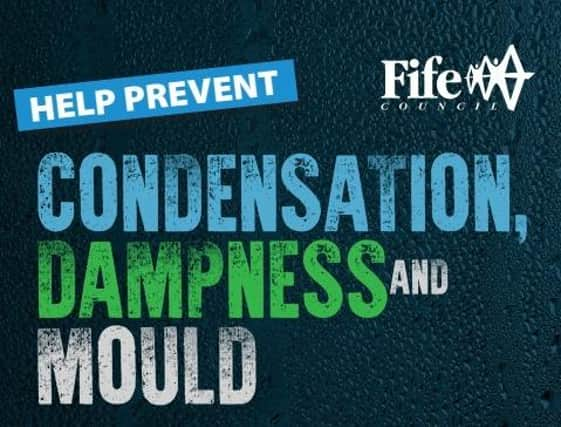Fife Council: Questions over tone of advice for tenants as council deals with over 1000 mould and moisture complaints


Fife’s Housing Services has been asked to review its latest advice for council tenants dealing with mould and moisture problems.
Councillor Brian Goodall (SNP For Rosyth) and a member of the People and Communities Scrutiny Committee, believes the new information leaflets blame tenants for condensation issues while overlooking cost of living barriers.
Advertisement
Hide AdAdvertisement
Hide Ad“I thought the council previously agreed that we should not be blaming tenants,” he said. “To me the leaflets seem to blame a lot of problems on lifestyle type issues – many of which are beyond tenant’s control due to cost of living issues.”
He continued: “The advice needs to be redrafted to be sensitive to the cost of heating. Opening a window and turning on the heating is beyond affordability for most people at this time.”
Dampness and condensation have been areas of concern for the council for some years, and in May the council’s Cabinet Committee members agreed to agree to an updated action plan for tackling the problem. The council agreed that it would “stop blaming tenants as the cause of condensation” and shift the culture of the service to work alongside them with “effective advice and support”.
Since then, housing services have been implementing a suite of improvements and action plans.
Advertisement
Hide AdAdvertisement
Hide AdThe service has implemented a single referral system, provided team training, and Building Services developed an in-house team to assist with condensation and dampness advice and to deliver specialist dampness mitigation work.
Advice and guidance pamphlets and posters have also been redesigned and refreshed. However, Cllr Goodall was less than impressed with the changes. The redesigned pamphlets give advice to dry laundry outdoors, provide ventilation and increase heating.
“If possible, keep low background heat on all day, with background ventilation,” the pamphlet says.
Councillor Ken Caldwell (SNP for Buckhaven, Methil and Wemyss villages) pointed out that the advice may sound reasonable but it is not always practical for council tenants
Advertisement
Hide AdAdvertisement
Hide Ad“Most tenants struggle to deal with condensation because of poverty,” he said. “These measures are an ask and it’s the wrong ask.”
Fife’s Service Manager for Housing Condition and Supply said that the pamphlets will be reviewed to strike the right tone.
“We want to support tenants to understand the best use of heating and ventilation. I absolutely recognise the pressures of heating costs,” she said.
Housing Services presented a full mould and moisture progress report to the People and Communities Scrutiny Committee on Thursday. Recent work has gone far beyond new pamphlets.
Advertisement
Hide AdAdvertisement
Hide AdThe service is currently addressing mould and moisture issues in more than 1000 council homes across the Kingdom.
“The current operational focus is on addressing the new referrals received by the team. Currently, there have been 1,047 referrals forming three per cent of existing housing stock,” the report said.
Condensation has been identified as the issue in 97 per cent of the council’s current mould and moisture cases. The council defines dampness as the presence of moisture due to disrepair, water ingress or breakdowns. Condensation is more variable and challenging. It is caused by a range of factors in housing design, insufficient heating and ventilation.
Housing staff have started to provide humidity and temperature monitors to assist tenants in monitoring environmental conditions in their homes.
Advertisement
Hide AdAdvertisement
Hide Ad“The addition of environmental sensors and tenant use monitors will provide an early warning of potential problems within a home. This will allow for pre-emptive advice and action to be taken,” the report explained. The idea is that when the monitors reveal high moisture levels, tenants can open a window, turn on their heating or take other measures to reduce condensation.
“Condensation, dampness and black mould are recognised as a major risk to health, and Fife Council recently conducted a formal review of the approach to tackling these issues,” the report said.
“The volume and detail of the referrals and the success of any mitigation measures will continue to be monitored and evaluated to ensure that the measures being applied are having a positive effect and are suitable resourced.”